Astronomy
What Is an Exoplanet?
All of the planets in our solar system orbit around the Sun. Planets that orbit around other stars are called exoplanets. Exoplanets are very hard to see directly with telescopes. They are hidden by the bright glare of the stars they orbit.
So, astronomers use other ways to detect and study these distant planets. They search for exoplanets by looking at the effects these planets have on the stars they orbit.
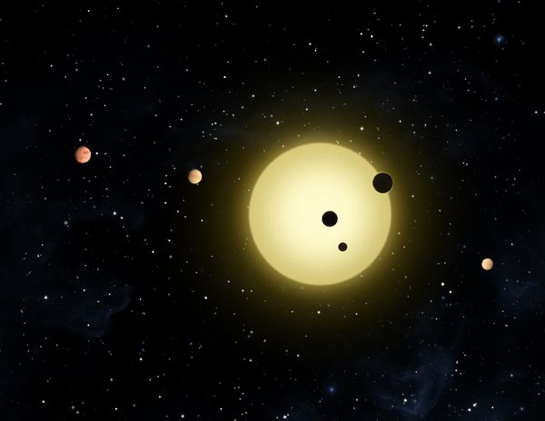
An artist's representation of Kepler-11, a small, cool star around which six planets orbit. Credit: NASA/Tim Pyle
How do we look for exoplanets?
One way to search for exoplanets is to look for "wobbly" stars. A star that has planets doesn’t orbit perfectly around its center. From far away, this off-center orbit makes the star look like it’s wobbling.
Hundreds of planets have been discovered using this method. However, only big planets—like Jupiter, or even larger—can be seen this way. Smaller Earth-like planets are much harder to find because they create only small wobbles that are hard to detect.
How can we find Earth-like planets in other solar systems?
In 2009, NASA launched a spacecraft called Kepler to look for exoplanets. Kepler looked for planets in a wide range of sizes and orbits. And these planets orbited around stars that varied in size and temperature.
Some of the planets discovered by Kepler are rocky planets that are at a very special distance from their star. This sweet spot is called the habitable zone, where life might be possible.
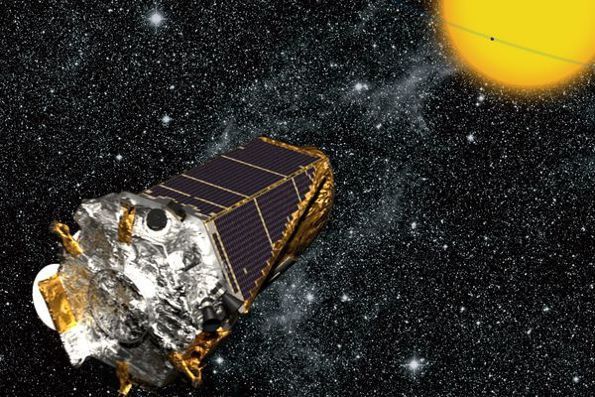
Artist's rendition of the Kepler spacecraft. Credit: NASA/Kepler mission/Wendy Stenzel
Kepler detected exoplanets using something called the transit method. When a planet passes in front of its star, it’s called a transit. As the planet transits in front of the star, it blocks out a little bit of the star's light. That means a star will look a little less bright when the planet passes in front of it.
Astronomers can observe how the brightness of the star changes during a transit. This can help them figure out the size of the planet.
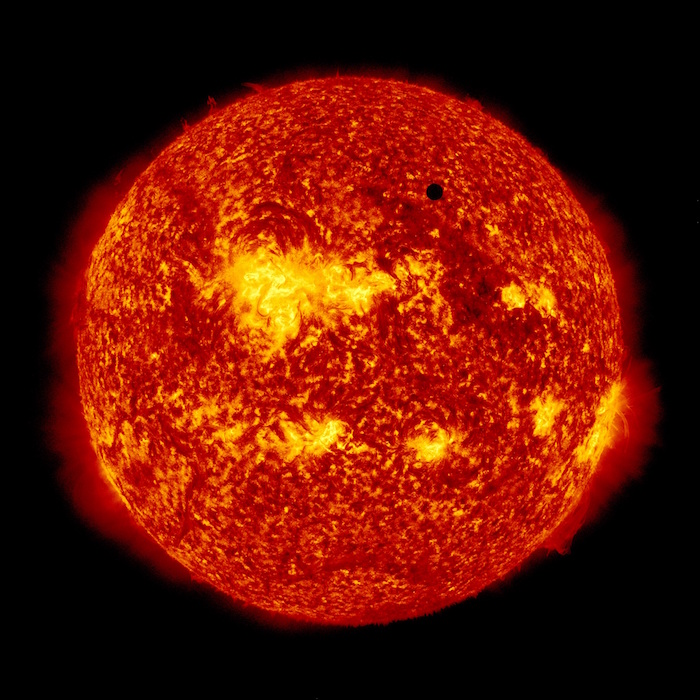
See that little black circle? That's Venus transiting our Sun back in 2012. Credit: NASA Solar Dynamics Observatory
By studying the time between transits, astronomers can also find out how far away the planet is from its star. This tells us something about the planet’s temperature. If a planet is just the right temperature, it could contain liquid water—an important ingredient for life.
So far, thousands of planets have been discovered by the Kepler mission.
https://spaceplace.nasa.gov/all-about-exoplanets/en/
Foundations of Algebra
Radicals: Introduction & Simplification
Radicals: Introduction & Simplification
The " " symbol used above is called the "radical"symbol. (Technically, just the "check mark" part of the symbol is the radical; the line across the top is called the "vinculum".) The expression " " is read as "root nine", "radical nine", or "the square root of nine".
We can raise numbers to powers other than just 2; we can cube things (being raising things to the third power, or "to the power 3"), raise them to the fourth power (or "to the power 4"), raise them to the 100th power, and so forth. In the same way, we can take the cube root of a number, the fourth root, the 100th root, and so forth. Just as the square root undoes squaring, so also the cube root undoes cubing, the fourth root undoes raising things to the fourth power, et cetera. To indicate some root other than a square root when writing, we use the same radical symbol as for the square root, but we insert a number into the front of the radical, writing the number small and tucking it into the "check mark" part of the radical symbol. This tucked-in number corresponds to the root that you're taking. For instance, relating cubing and cube-rooting, we have:
The "3" in the radical above is called the "index" of the radical (the plural being "indices", pronounced "INN-duh-seez"); the "64" is "the argument of the radical", also called "the radicand". Perhaps because most of radicals you will see will be square roots, the index is not included on square roots. While " " would be technically correct, I've never seen it used.
a square (second) root is written as:
a cube (third) root is written as:
a fourth root is written as:
a fifth root is written as:
We can take any counting number, square it, and end up with a nice neat number. But the process doesn't always work nicely when going backwards. For instance, consider , the square root of three. There is no nice neat number that squares to 3, so cannot be simplified as a nice whole number. We can deal with in either of two ways: If we are doing a word problem and are trying to find, say, the rate of speed, then we would grab our calculators and find the decimal approximation of :
Then we'd round the above value to an appropriate number of decimal places and use a real-world unit or label, like "1.7 ft/sec". On the other hand, we may be solving a plain old math exercise, something having no "practical" application. Then they would almost certainly want us to give the "exact" value, so we'd write our answer as being simply "".
Since most of what you'll be dealing with will be square roots (that is, second roots), most of this lesson will deal with them specifically.
Simplifying Square-Root Terms
To simplify a term containing a square root, we "take out" anything that is a "perfect square"; that is, we factor inside the radical symbol and then we take out in front of that symbol anything that has two copies of the same factor. For instance, 4 is the square of 2, so the square root of 4 contains two copies of the factor 2; thus, we can take a 2 out front, leaving nothing (but an understood 1) inside the radical, which we then drop:
Similarly, 49 is the square of 7, so it contains two copies of the factor 7:
And 225 is the square of 15, so it contains two copies of the factor 15, so:
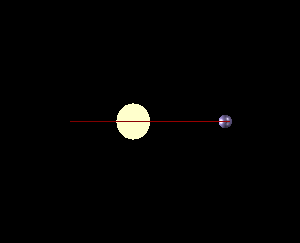
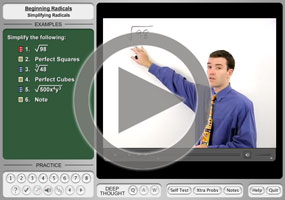
No comments:
Post a Comment